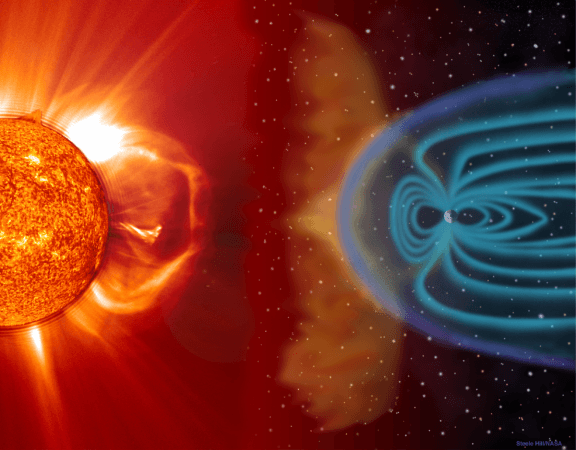
There is a massive bubble of protection that surrounds the entire Solar System. The heliosphere is a "cosmic filter" extended by the Sun that keeps dangerous cosmic radiation from reaching Earth's neighbourhood. NASA now wants to learn more about it and is likely to launch a probe to study the heliosphere in 2024.
The heliosphere is a bubble formed by charged particles and magnetic fields emanating from the Sun. It works in a way that is similar to the Ozone layer over the Earth, keeping harmful deep space radiation out, the kind that can be high in energy and extremely dangerous.
However, the heliosphere is not a layer that is impenetrable in the physical dimension. The new NASA mission - Interstellar Mapping and Acceleration Probe (IMAP) - will collect and study fast-moving particles that make it through, reports Space.com. Here's what the deputy associate administrator for NASA's Science Mission Directorate, Dennis Andrucyk had to say.
This boundary is where our sun does a great deal to protect us. IMAP is critical to broadening our understanding of how this 'cosmic filter' works. The implications of this research could reach well beyond the consideration of Earthly impacts as we look to send humans into deep space.
The probe will be launched toward the Earth-Sun Lagrange Point 1. Lagrange points, or L-points are regions in space that are stable because gravity from the Sun and Earth interact in a way that will keep any outer space body like a satellite, trapped in this spot locked up and stable. The L-1 point is located between the Sun and Earth about 1.5 million km out.
The IMAP will reportedly have about 10 onboard instruments to characterize particles moving through that region. The mission will reportedly uncover the interaction between interstellar radiation and the Solar wind which is the constant stream of charged particles that flow out from the Sun.
Such work should shed light on the interaction between the medium and the solar wind and help researchers better understand how cosmic rays are accelerated inside the heliosphere, among other things, NASA officials said. The mission will also probe why cosmic rays get accelerated inside the heliosphere, notes the report.














